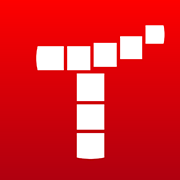Learn to Code: 16 Programming Platforms and Kits Perfect for Kids and Teens
The Ultimate Guide: 15 Coding Languages and Tools for Young Programmers
Table of Content
Introducing kids and teens to programming early on can be incredibly beneficial. Not only does it equip them with valuable technical skills, but it also enhances problem-solving abilities, logical thinking, and creativity. Learning to code can open up new opportunities and prepare young minds for the future, where technology plays a major role in almost every field.
What is Visual Programming and Visual Coding?
Visual coding and visual programming are methods of creating software applications using graphical elements rather than text-based code. In these approaches, users manipulate visual representations of programming concepts—such as blocks, icons, or diagrams—to build and control the behavior of a program. This method contrasts with traditional programming, where developers write lines of code in a specific programming language.
Visual coding typically involves using blocks or graphical elements that represent different coding commands and functions. These blocks can be dragged and dropped into a workspace to create a sequence of actions. Each block is like a piece of a puzzle that fits together to form a logical sequence, making it clear how different parts of a program connect and interact.
Visual programming expands on the concept of visual coding by providing a more comprehensive environment that allows users to create complex programs through visual means. It often includes tools for designing user interfaces, controlling logic flow, and managing data, all using visual elements like flowcharts or node-based systems.
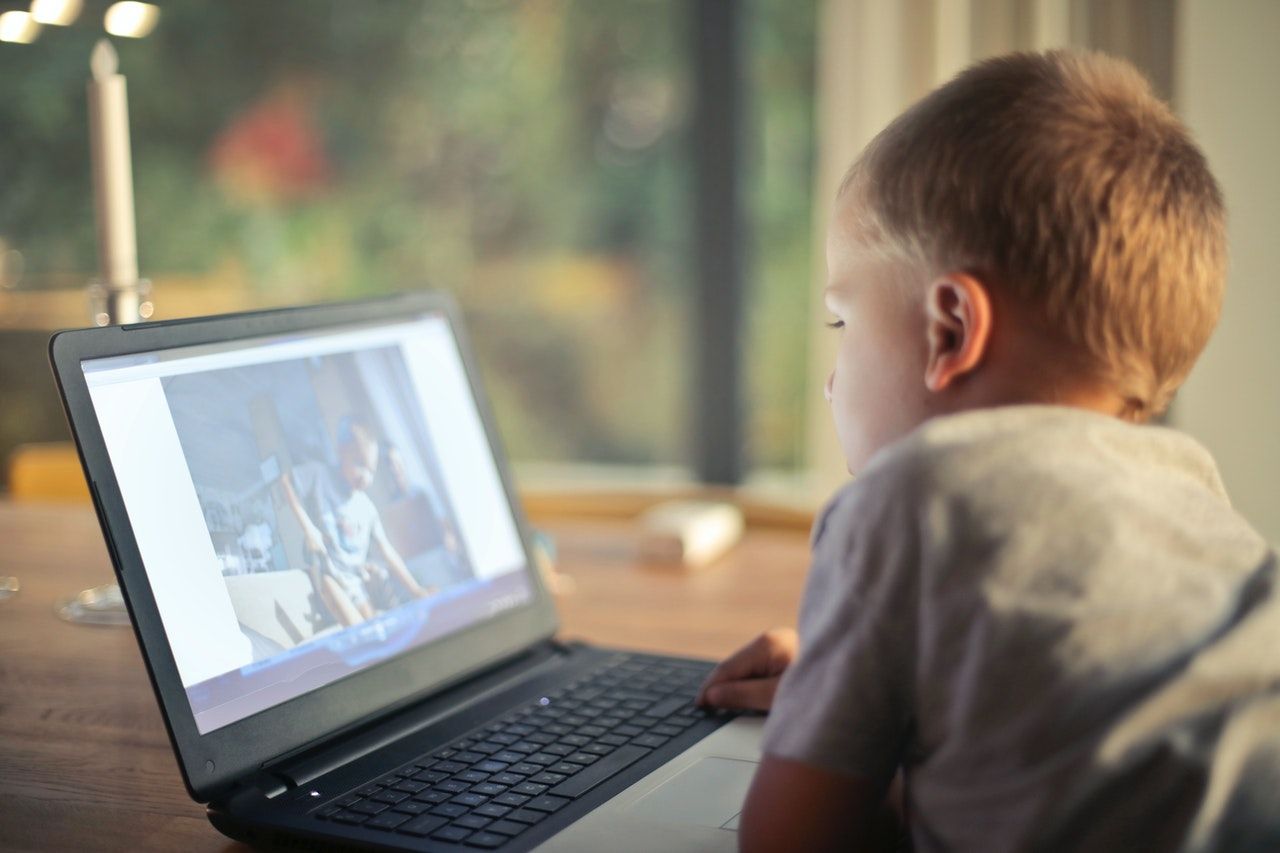
Why is Visual Programming Easy for Kids?
- Intuitive Learning: Visual programming is intuitive because it uses a straightforward, drag-and-drop interface that resembles playing with building blocks. This makes it accessible to kids who may not yet be comfortable with typing or reading extensive amounts of text.
- Immediate Feedback: Kids can see the results of their actions in real time. If they connect the blocks in a certain way, they can immediately see what happens, making learning interactive and engaging.
- Reduces Complexity: Visual programming abstracts the complexity of syntax and programming language rules, allowing kids to focus on the logic and structure of their programs rather than worrying about errors from typing mistakes or misunderstandings of syntax.
- Encourages Experimentation: Since it’s easy to move blocks around and try different combinations, kids are more likely to experiment and explore, fostering creativity and a better understanding of programming concepts.
- Builds Foundational Skills: Visual programming teaches fundamental concepts like sequencing, loops, conditionals, and variables in a way that is easy to grasp. This foundational understanding can make it easier for kids to transition to text-based coding later on.
Overall, visual coding and programming make learning to code accessible and enjoyable for kids, providing them with a solid foundation in computational thinking that can be built upon as they grow older.
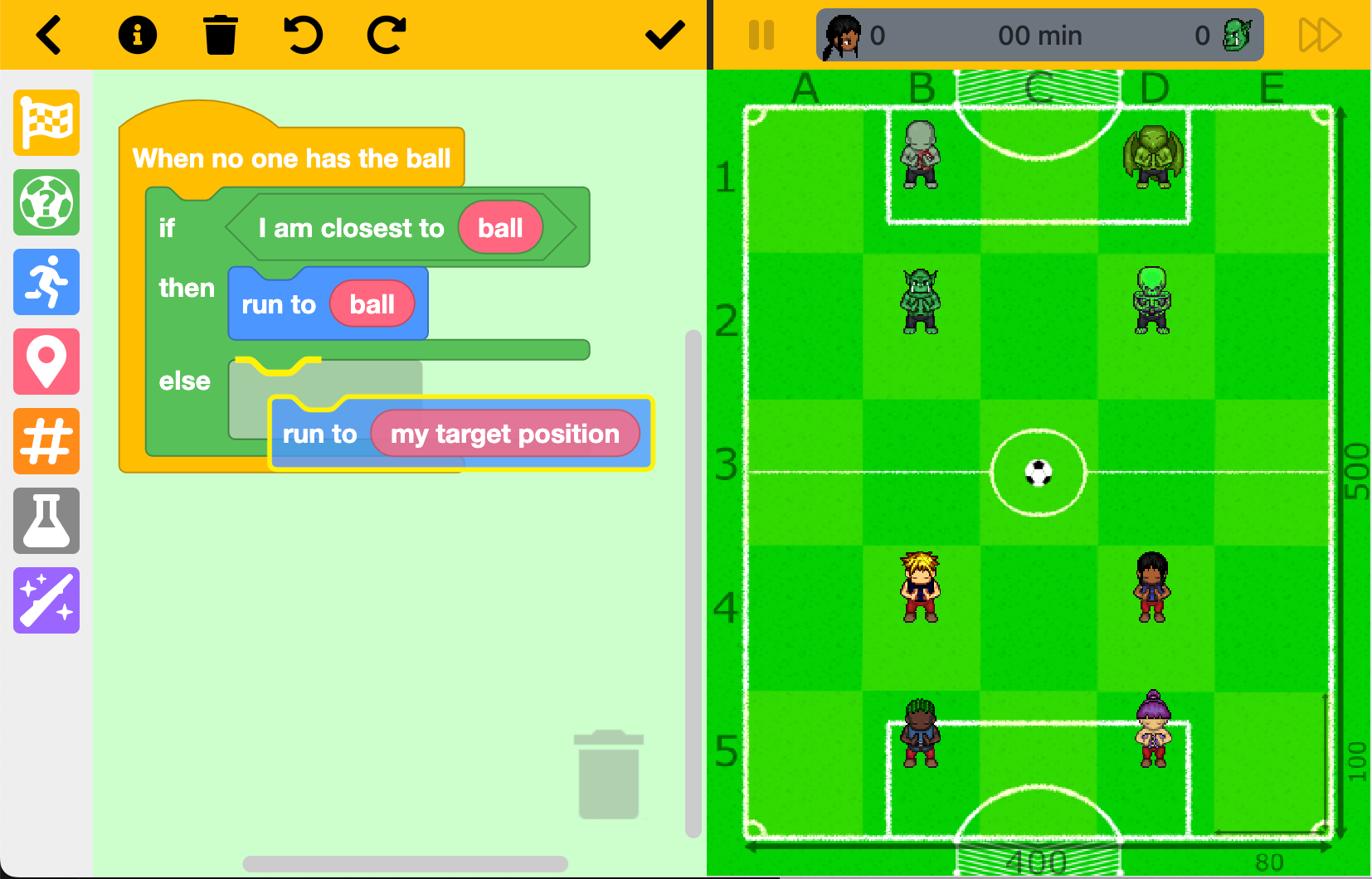
Here are 13 free programming and educational platforms designed specifically for kids and teens to start their coding journey. These platforms make learning fun and engaging, ensuring that young learners develop a solid foundation in programming while enjoying the process.
1- Scratch
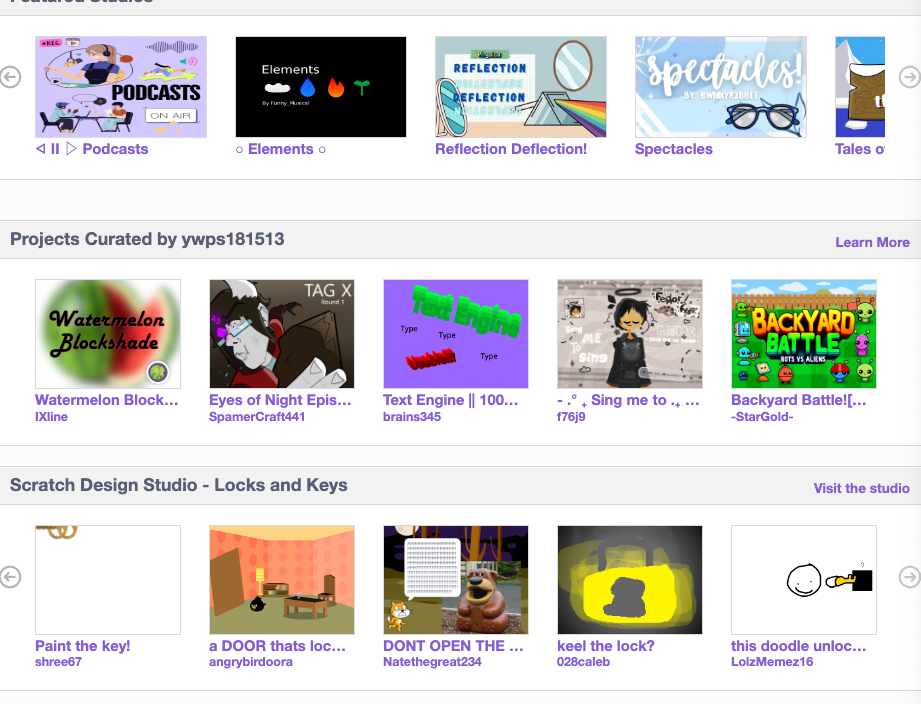
Scratch was developed by the Lifelong Kindergarten Group at the MIT Media Lab and was first released in 2007. It was created to make programming accessible and enjoyable for young learners, allowing them to explore coding without the complexity of traditional programming languages. Since its launch, Scratch has undergone several updates, with Scratch 3.0 being the latest version, offering a web-based platform that supports a wide range of devices and introduces new features like extensions and an updated interface. Scratch is widely used in schools around the world, particularly in countries like Turkey, the United States, the United Kingdom, and Finland.
In the United States, many elementary and middle schools incorporate Scratch into their curricula to introduce computer science fundamentals and promote computational thinking. In the United Kingdom, Scratch is part of the national curriculum for computing, where it is used to teach programming concepts and digital creativity.
In Finland, known for its progressive education system, Scratch is used to foster creative problem-solving and collaborative learning in various subjects beyond computer science. These examples show how Scratch is a valuable tool for engaging students in programming and enhancing their overall learning experience. write for a blog post
2- Blockly
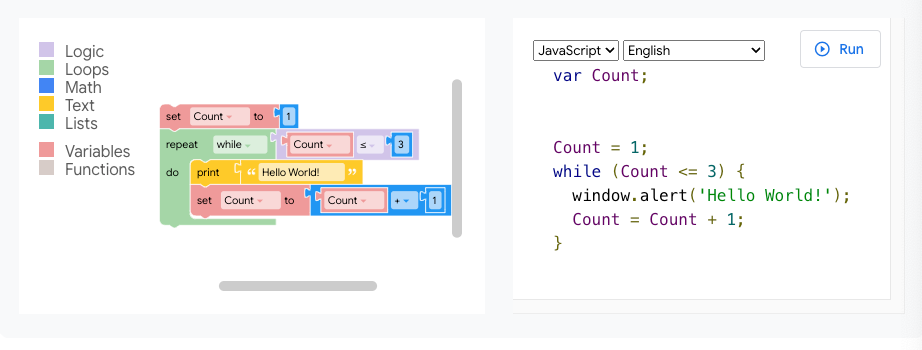
Blockly is a free tool created by Google that helps people learn to code in a visual way. Instead of typing out lines of code, you can use colorful blocks that snap together like puzzle pieces to build programs.
Picture a digital workspace where you have different shapes and colors representing various coding commands. You can drag these blocks around and connect them to create a sequence of instructions - that's your program!
This approach makes it much easier for beginners to understand how coding works. You can see how different parts of your program fit together without worrying about getting the exact syntax right.
What's really cool is that Blockly can turn these block arrangements into actual code in different programming languages. So while you're playing with blocks, you're actually creating real programs in languages like JavaScript, Python, or PHP.
It's a bit like learning to ride a bike with training wheels. Blockly gives you a stable, visual way to start coding before you move on to typing out code yourself.
Many educational platforms and coding tools for kids use Blockly or similar block-based systems. It's a great way to introduce coding concepts and logic without the initial frustration of dealing with syntax errors.
3- Snap!
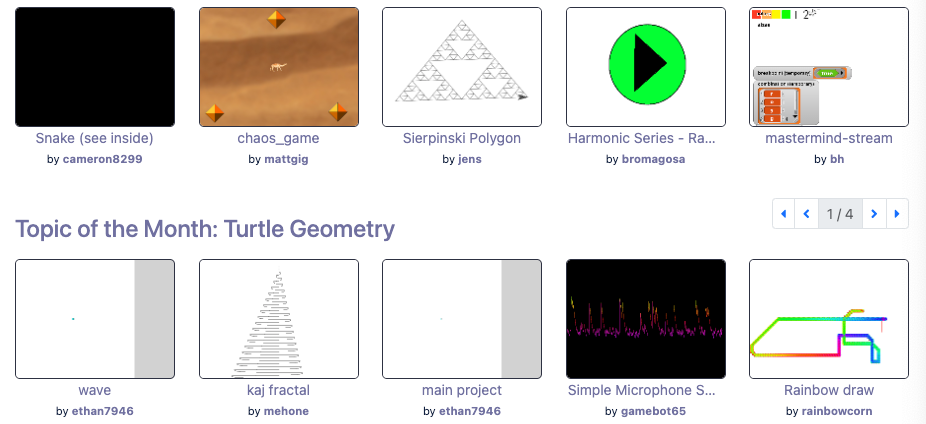
Snap! is a visual, block-based programming language designed for education, similar to Scratch but with more advanced features, making it suitable for both beginners and advanced learners.
It comes with a drag-and-drop interface, support for advanced programming concepts like recursion and first-class lists, browser-based.
4- WPF-Blockly
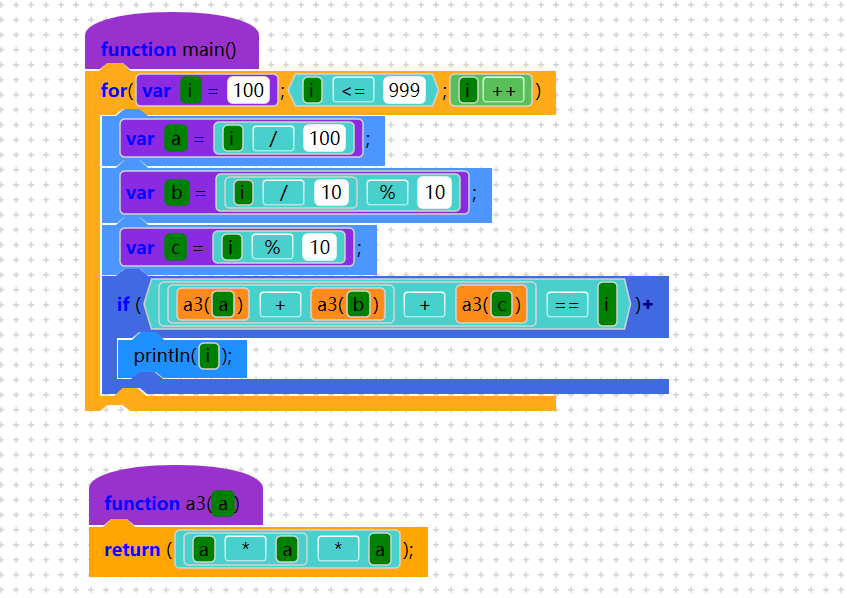
WPF-Blockly is an open-source project that integrates Blockly, Google's visual programming library, with Windows Presentation Foundation (WPF) to create a block-based coding interface for desktop applications.
This integration allows developers to build applications that feature Blockly’s drag-and-drop interface within a WPF environment, making it easier to create educational tools and games that teach programming concepts through visual blocks.
Key Features
- User-Friendly Interface: WPF-Blockly provides a straightforward, block-based coding environment that simplifies programming for beginners, especially children and educators, by eliminating the need to write traditional code.
- Customization and Flexibility: The project allows developers to customize Blockly for specific educational needs or applications, making it a versatile tool for teaching various programming concepts in a desktop environment.
- Enhanced Learning Experience: By combining WPF’s powerful desktop application capabilities with Blockly’s visual programming interface, WPF-Blockly offers an engaging and interactive learning platform that encourages experimentation and problem-solving.
- function with parameter and return value
- recursive function
- variable and variable scope (local variable)
- operator, including +, -, , /, %, &, |, ^, >>, <<, ++, --, &&, ||, !, +=, -=,=,/=, &=, |=, ^=, >>=, <<=
- if else, for, while, do while and case statement
- loop flow control, including break, continue and return
- try catch finally, exception handling
- array
- support string operation
- support stack, queue, dictionary, list and binary tree
- support sound synthesis
- support translation
- support drawing canvas liking python turtle
5- Processing
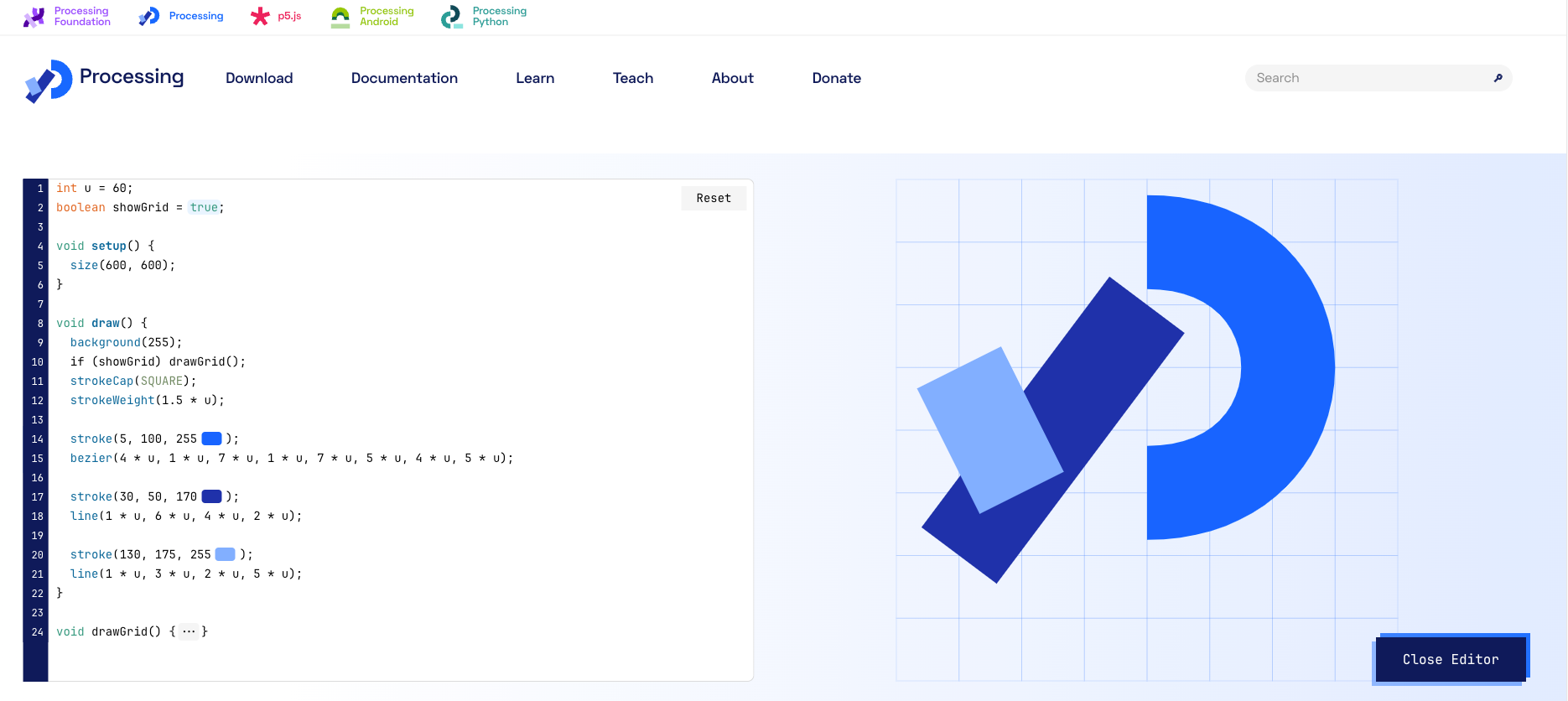
Processing is a flexible software sketchbook and a language for learning how to code in the context of visual arts. It's great for kids, middle school, and high school students because it makes coding fun and creative, allowing them to easily create graphics, animations, and interactive content.
Processing supports multiple languages, including Java, JavaScript, and Python, making it accessible for a wide range of learners. By using Processing, students can develop their coding skills while exploring their artistic abilities, fostering creativity and problem-solving in a friendly and engaging environment.
It comes with dozens of free and open-source examples.
6- ScratchJr
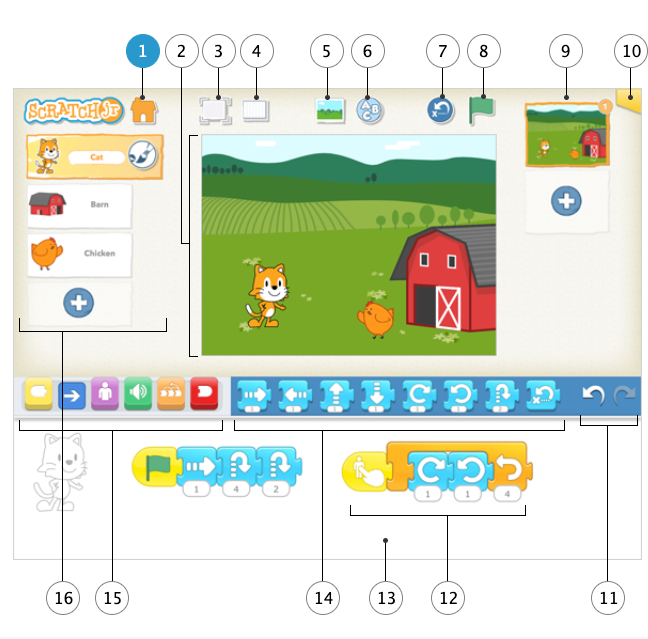
ScratchJr is a fun and easy-to-use programming app designed just for kids ages 5 to 7! With ScratchJr, you can create your own interactive stories and games by snapping together colorful blocks that make characters move, jump, dance, and even sing. It's a great way to start learning the basics of coding while letting your imagination run wild.
Plus, you don’t need to know how to read—you can just tap, drag, and drop to bring your creative ideas to life! Whether you’re at home or in school, ScratchJr makes learning to code a fun adventure!
It is available for iOS (iPhone and iPad), and Android. Amazon Tablet users can download and use directly from Amazon AppStore.
7- CodeCombat
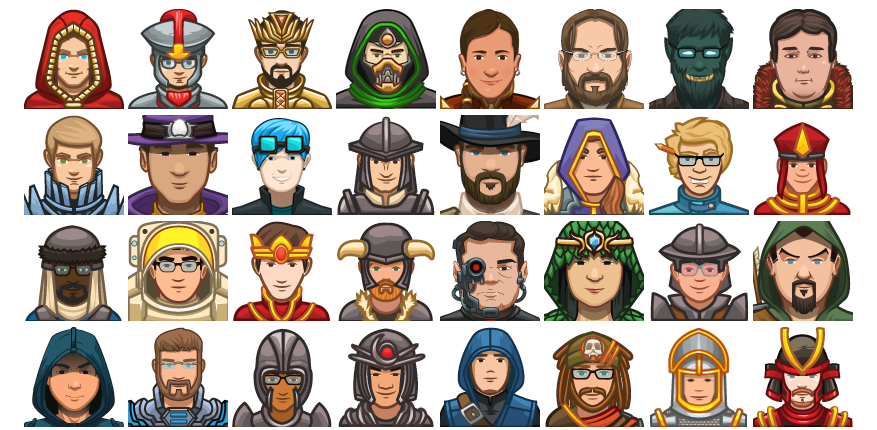
Imagine a super cool game where you're the master of a fantasy world, but instead of just clicking buttons, you're actually writing real code to control everything! That's CodeCombat in a nutshell.
It's this awesome, free platform that tricks kids (and honestly, plenty of adults too) into learning how to code while they're having a blast. You're not just staring at boring textbooks - you're making characters move, fight monsters, and solve puzzles using languages like Python and JavaScript.
The best part? As you play and progress through different levels, you're picking up serious programming skills without even realizing it. It's like learning a new language by going on an adventure instead of memorizing vocabulary lists. Pretty neat, right?
CodeCombat is perfect for anyone who's ever thought coding was too hard or dull. Trust me, once you start playing, you'll be hooked and coding like a pro before you know it!
Benefits for Kids:
- Interactive Learning: CodeCombat provides a fun and interactive way to learn coding, which can be more engaging than traditional classroom settings. This gamified approach helps maintain children's interest and encourages continuous learning.
- Real Programming Languages: Unlike many other educational platforms, CodeCombat uses actual programming languages. This provides kids with practical skills that they can directly apply to real-world projects as they advance in their coding journey.
- Problem-Solving Skills: Through its puzzles and challenges, CodeCombat helps kids develop critical thinking and problem-solving skills. Players need to analyze situations, write code, and debug errors, which are essential skills in programming and many other fields.
- Immediate Feedback: The game provides instant feedback on the code written by the players. This immediate response helps kids understand the results of their actions quickly, allowing them to learn from mistakes and correct them on the spot.
- Collaborative Environment: CodeCombat fosters a community where kids can learn collaboratively, share ideas, and help each other. This social aspect enhances learning through peer support and group activities.
- Adaptability and Progress Tracking: The platform adjusts the difficulty of tasks based on the player's progress, ensuring that each child is challenged according to their skill level. It also tracks progress, allowing parents and educators to monitor learning and improvement over time.
8- Lightbot
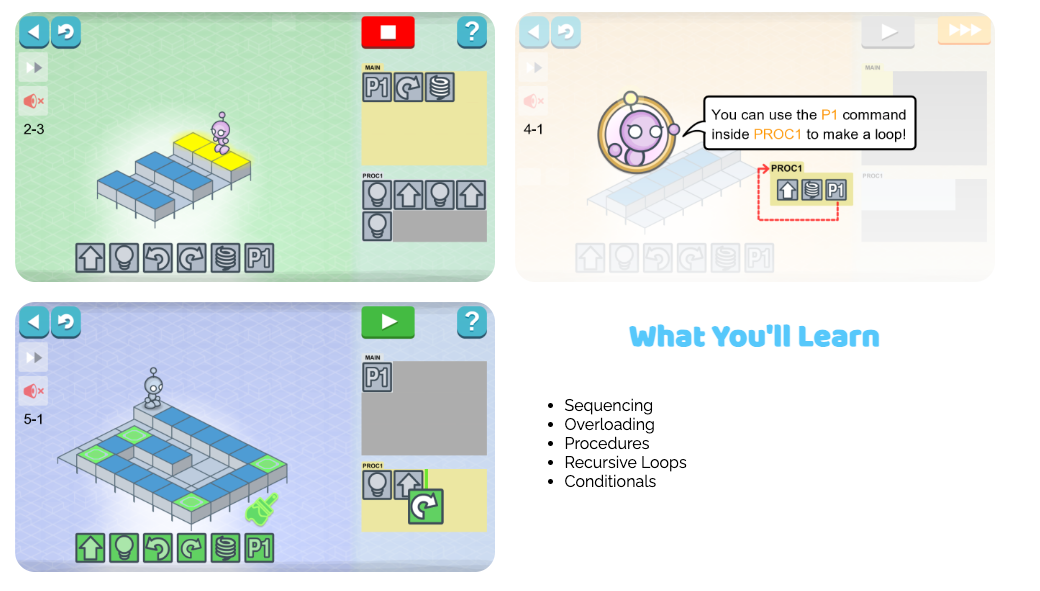
Lightbot is a super cool game that sneaks in some coding lessons while you're having fun!
Imagine you've got this cute little robot buddy, and your job is to help it complete missions. But here's the twist – instead of just pushing buttons, you're giving your robot friend step-by-step instructions, kind of like a dance routine.
You'll tell your robot things like "move forward," "turn left," or "jump," and then watch it follow your commands. The tricky part? You've got to put these instructions in the right order to get through each level. It's like solving a puzzle, but way more exciting!
As you play, you'll start picking up some nifty coding ideas without even realizing it. You'll learn stuff like how to repeat actions (that's what grown-ups call "loops") and how to make decisions (they call those "conditionals").
The best part? It's perfect for kids who think they're "not good at computers" or find coding boring. Trust me, once you start playing Lightbot, you'll be hooked and thinking like a real programmer in no time!
It is available for iOS for ~$3, and the same price for Android.
9- Tynker
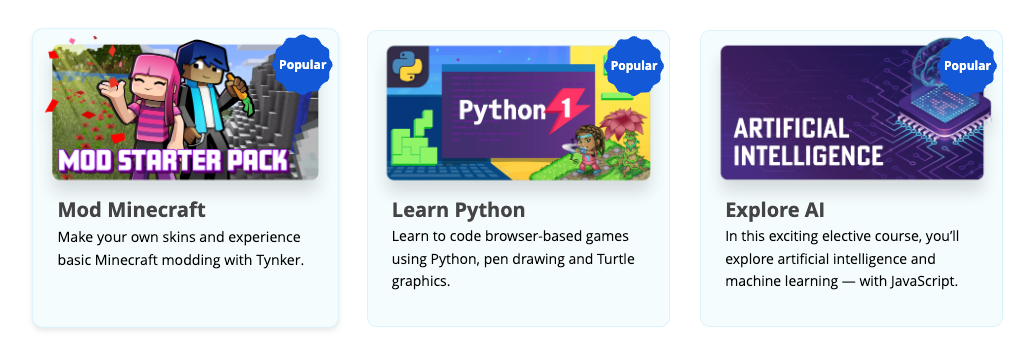
Tynker is like a playground for your kid's imagination, but instead of swings and slides, you're playing with code!
Picture this: you get to make your very own games and cool animations, just by moving around colorful blocks on your screen. It's super easy - no need to type out complicated stuff. You just drag, drop, and watch your ideas come to life!
The best part? Tynker holds your hand through the whole process. They've got these fun, step-by-step guides that show you exactly what to do. It's like having a friendly teacher right there with you, cheering you on as you learn.
And get this - while you're having a blast making games, you're secretly learning some serious coding skills! As you get better, Tynker even lets you play around with real programming languages like JavaScript and Python. How cool is that?
Oh, and did I mention a lot of it is free? Yep, Tynker's got tons of free stuff for you to try out. So if you've ever wanted to create your own video game or make cool animations, Tynker's the place to start. Trust me, you'll be amazed at what you can do!
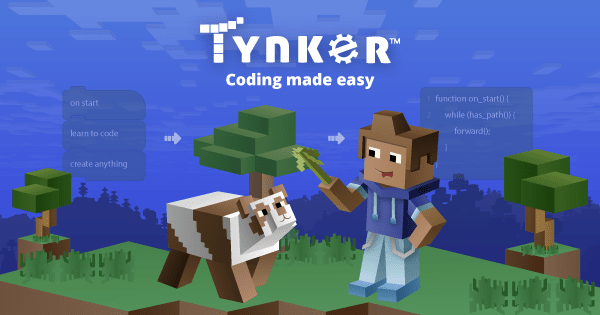
10- Kodu Game Lab
Kodu is a game-making playground that puts your kid in the driver's seat.
Here's what makes it special:
- Visual magic: Instead of typing code, you use pictures and simple rules to bring your ideas to life. It's like building with colorful blocks, but way cooler.
- Your world, your rules: Start with a blank canvas and shape entire landscapes. Add trees, change the ground, even mess with gravity!
- Characters come alive: Drop in quirky characters and give them personalities. Make them move, react, and interact just by setting up simple "when this, do that" rules.
- Play as you create: The best part? You can test your game at any time. Spot something off? Just pause, tweak, and jump right back in.
- Share the fun: Once you're done, invite friends to play your creation. You can even peek at how other people made their games to learn new tricks.
- More than just games: While Kodu is great for making games, it also teaches you to think logically and solve problems creatively.
- No experience needed: Whether you're 8 or 80, if you can use a mouse, you can start creating with Kodu.
- Free for all: Kodu doesn't cost a penny, so anyone can dive in and start creating.

11- Alice
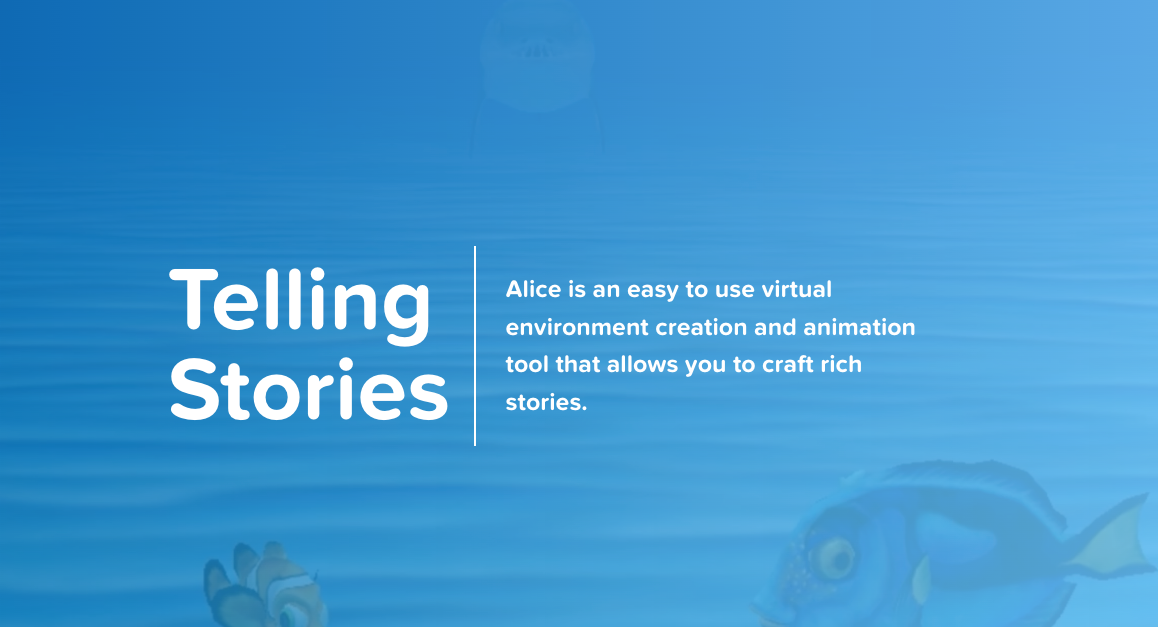
Alice isn't your average coding tool. It's like a magical playground where your imagination can run wild! Picture this: you're in control of an entire 3D world, filled with characters and objects you can move around with just a few clicks. No complicated coding required – promise!
It features a 3D graphics, drag-and-drop interface, storytelling and game creation, introductory programming concepts like loops and conditionals.
Alice IDE is available for Windows, Linux and macOS.

12- Code Monkey
CodeMonkey is an educational game where kids help a monkey catch bananas by writing code. It starts with a simple language called CoffeeScript, perfect for beginners, and gradually introduces more complex challenges. As kids improve, they can move on to learning Python, a language used by professional developers.
The game offers various themed courses, including game design and chatbot creation, making it a fun way to learn coding, problem-solving, and logical thinking. Parents and teachers appreciate CodeMonkey for its educational value and engaging gameplay.
13- Open Roberta
Open Roberta is a free, open-source platform that offers a visual way to program robots and microcontrollers, such as LEGO Mindstorms and BBC micro.
It's designed to be user-friendly, allowing kids and beginners to easily create programs by dragging and dropping blocks that represent different commands. This makes it simple to control robots and devices, helping users learn programming and robotics through hands-on experience. Open Roberta is great for classrooms, workshops, or anyone interested in exploring the basics of coding and robotics.
14- Catrobot
Catrobat is a free, open-source platform for creating mobile apps and games. It features a visual programming language designed for kids and beginners, allowing users to create animations, games, and interactive stories using a simple drag-and-drop interface.
Catrobat’s main app, Pocket Code, runs on Android devices and makes learning to code accessible and fun by letting users build projects directly on their phones or tablets. It supports sharing and collaboration, encouraging creativity and learning in a community-driven environment. rewrite make it not detected by Ani AI detector as AI generated content
15- LÖVE
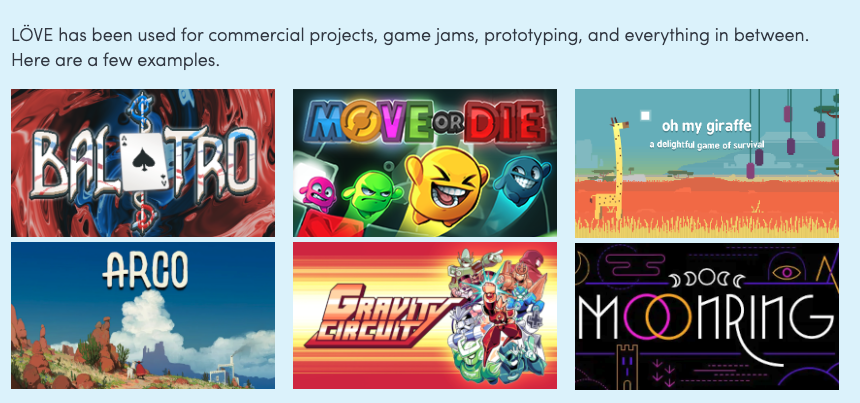
Love is an amazing 2D game engine that enables developers to create interactive fancy games in Lua programming for Windows, Linux, Android, macOS and iOS.
While it is recommended for older kids and teens as it helps them understanding how programming works and how to finalize their projects, it is also recommended for anyone who is interested in creating 2D games, even if their programming experience is minimal.
16- MakeCode Arcade
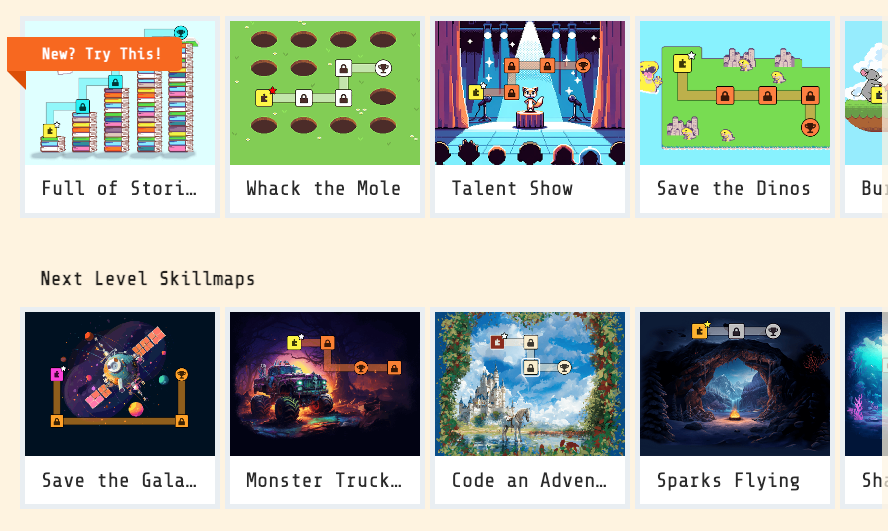
MakeCode Arcade is a free, open-source platform developed by Microsoft that allows kids and beginners to create their own retro-style video games. Using a block-based visual programming interface, users can drag and drop code blocks to build game logic, characters, and environments, making it easy for anyone to start coding without prior experience.
MakeCode Arcade also supports JavaScript and Python for those who want to learn text-based programming. The platform is accessible through a web browser, and games can be played on various devices, including computers and handheld gaming consoles, making it a versatile tool for learning programming and game design in a fun and engaging way.




